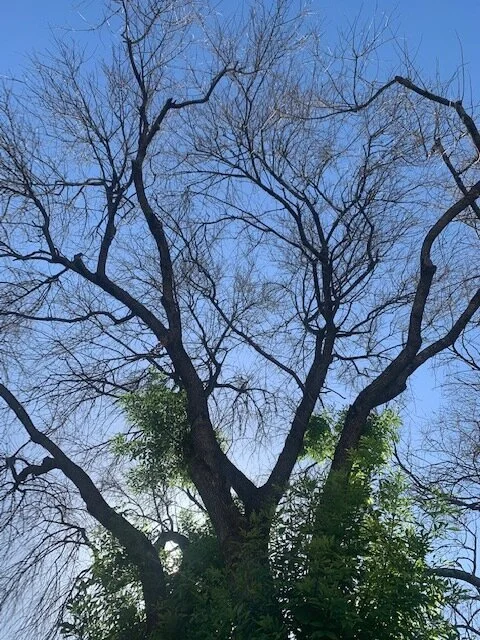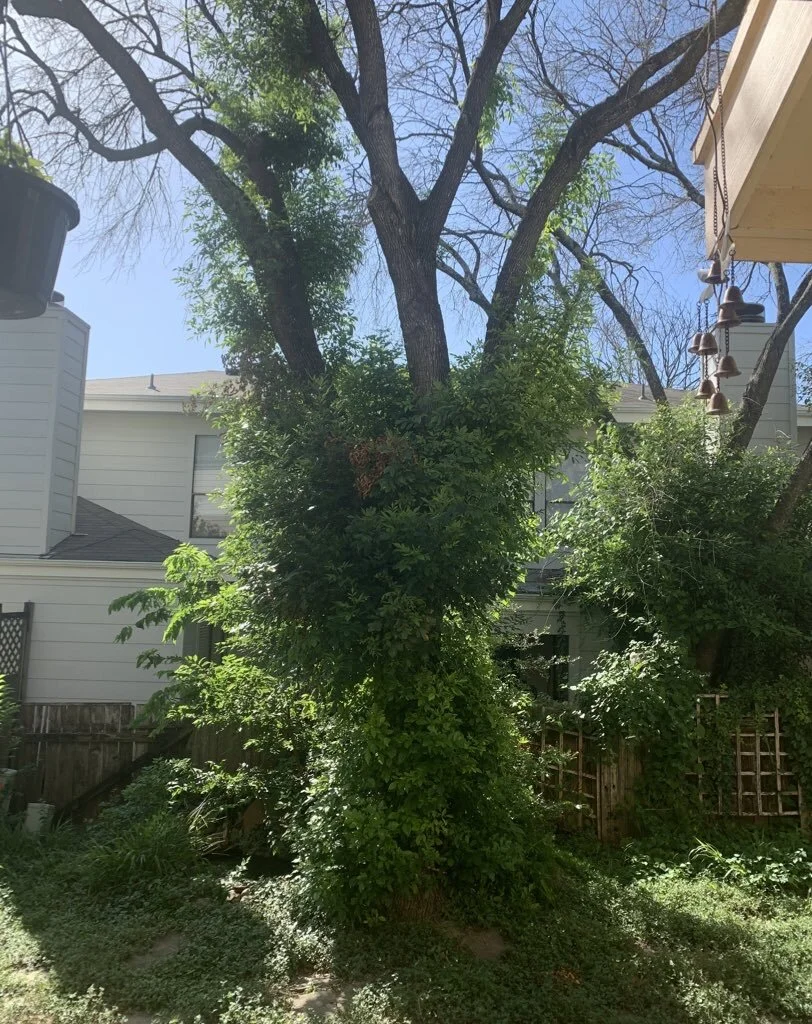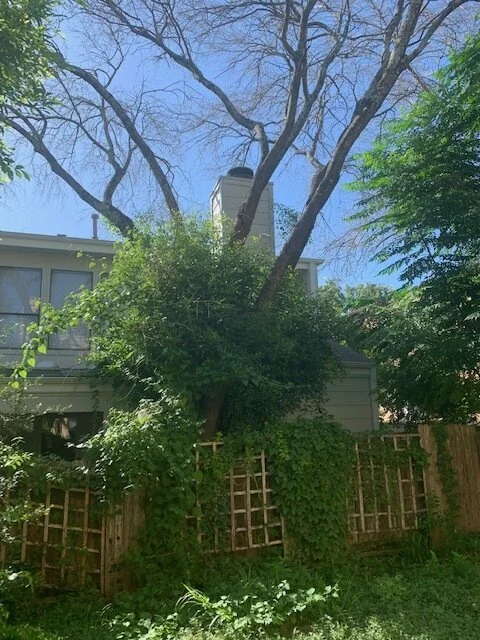Epicormic Sprouts
No matter how beautiful or impressive the shape of survival, this is not what my tree was meant to be. I can both admire what it is and grieve for what it was.
There is something wrong with the trees.
The week before that historic winter storm hit Texas, it was almost 80 degrees. Our trees had already begun to bud, preparing to leaf out over the next several months. That’s normal. We often get a deep freeze in February or March, but the trees don’t usually mind much. They know what they are doing.
A week of sub-freezing temperatures is not normal. Most Texans saw some pretty serious damage to our landscapes. Gardening in March was like playing a strange guessing game called “Is this dead”? I’m happy to report that a lot of my natives - lantana, esperanza, straggler daisy - all returned from the snow and ice. Only the rosemary died. My star jasmine died all the way to the ground but she’s already climbed five feet this Summer! My dad says you can’t kill jasmine even if you want to.
I started looking for signs of life in my 30 ft ash tree in May. Ash trees bud late for Texas, leafing well after the other trees. It’s often the middle of May before the canopy really starts to fill in. But there was nothing on my tree—no buds, no leaves. It wasn’t until almost June that the ash and oak trees all over my neighborhood began to put out new growth and it was... well, take a look.
These are called epicormic sprouts or suckers. There’s a lot of science going on here but let’s just call it a tree's emergency survival plan. It can look like saplings or shoots coming out from near the trunk, or like a puff of rounded sprouts sitting in the midst of an array of dead branches. They look odd, even comical in places. In the case of my ash tree, these “suckers” are spiraling up the trunk like large, leafy pom poms pretending to be moss or lichen. It’s very strange. It’s also beautiful.
Survival is like that, regardless of the species. Sustained stress from abnormal events alters the very shape of life. In a human being, it can alter the brain. Normal resources vanish and we have to call upon a reserve of cells and energy that typically lie unseen. What emerges, after the acute danger passes, is not unlike what was before—new leaves, growth—but it is not the same. Life is not the same.
Survival is beautiful. I understand why our human hearts delight in stories of resilience, why we long to hear of someone overcoming the odds. We want to rush to a happy outcome, to celebrate bravery, to feel inspired or empowered by it. But I think we would do well to remember that the shape of survival reflects the reality of death. Millions of trees across the state, including our mighty and long-lived live oaks, may die. I can’t help but remember this sad truth while looking out at my tree, even as I am mesmerized by what I see each day. No matter how beautiful or impressive the shape of survival, this is not what my tree was meant to be. It was forced into this shape by the harshest conditions. I can both admire what it is, how it fights to survive, and grieve for what it was.
Survival takes time. All of the arborists and scientists are saying the same thing to us worried gardeners: “Just wait”. Many trees will make it through to their winter dormancy and come back to something like themselves next year. Some will die. There’s nothing to do for them as no pruning nor fertilizing will help. We can water, if it’s dry, and watch for disease. We have to wait patiently as they fight their way through. We can’t do much but bear witness and yet, for some forms of survival in this world, that is a critical step.
For human survivors, it is everything.






